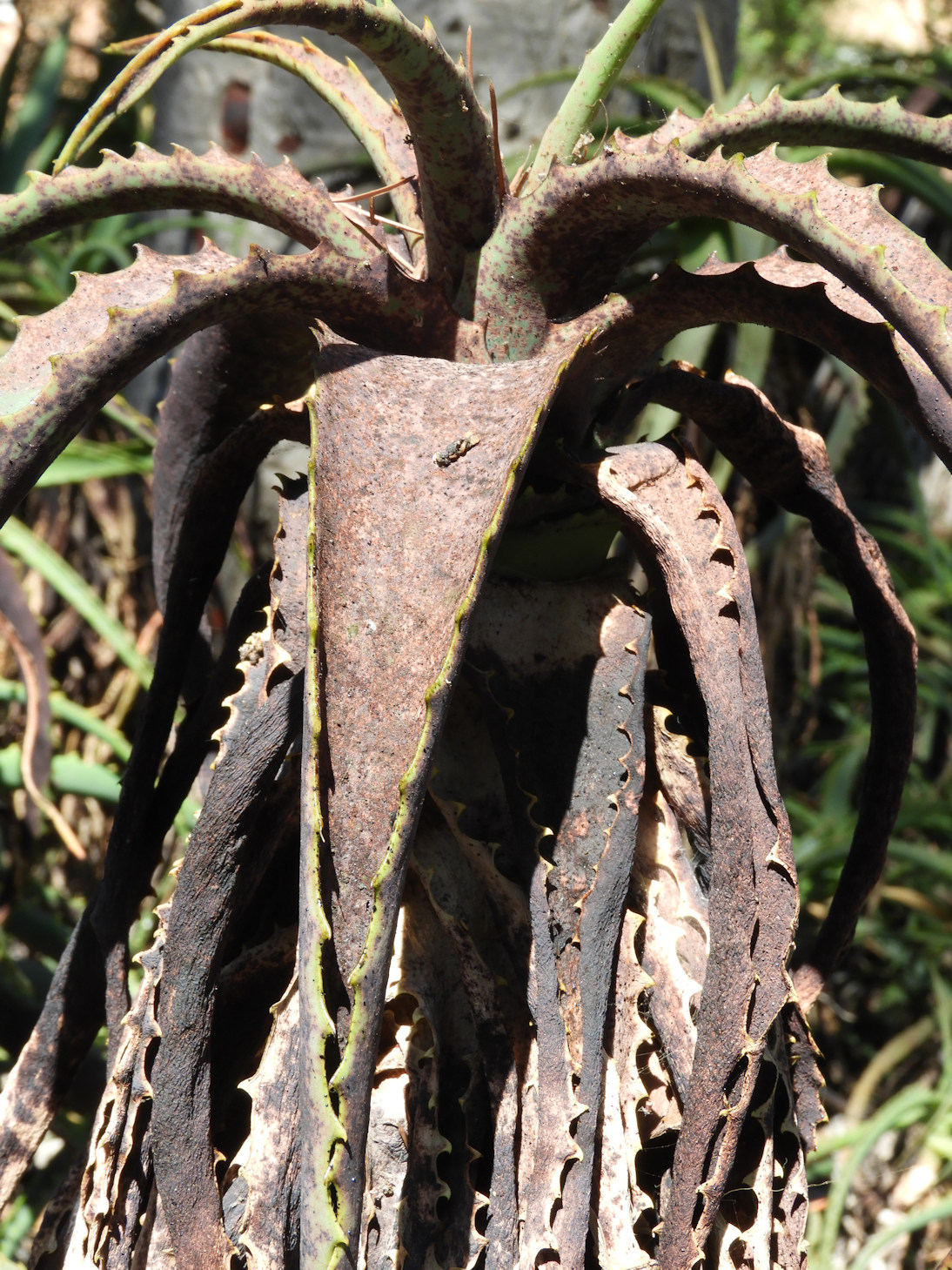
Aloe Die-back in Gibraltar
A few years ago a disease was proliferating among the Tree Aloes, Aloe arborescens around Gibraltar. Large stands of the plant around Europa Point and the east side of Gibraltar were badly affected, and several stands were unable to survive, and perished. Those that did weather the storm, recovered slowly during the winter months and managed to put on the display of their colourful and characteristic flowers; the red pokers.
The Tree Aloe is not native to Gibraltar, and was shipped over from South Africa and introduced into gardens in the 19th century, mainly in the south District, where officers had their quarters. It is an alien species, but not invasive, and the species does not set viable seeds. It propagates mainly through their root systems, and grows rather slowly, making a recovery extremely difficult.



The disease, which has not been identified, may be fungal or bacterial, and is spread by an insect, a species of Thrip that is feeding on the sap of plant, breaking through the hard skin and thereby introducing the pathogen within the plant. The Thrip is microscopic, less than half a millimetre in length.

This year, the disease is back, strongly affecting those few stands which survived. It shows as a browning of the lower leaves , with brown rust coloured spots quickly spreading and drying the leaves, and covered in small black sploshes, which are the faecal matter of the insects that are sucking the sap. Eventually the last few leaves growing at the head of the stem dries out and the plant dies.